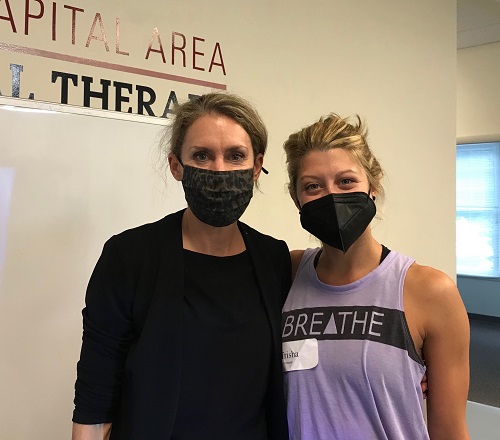Malta, New York’s colorful foliage and Capital Area Physical Therapy and Wellness welcomed Postural Respiration into its PT-owned clinic. Course attendees had expertise across multiple disciplines — physical therapy, strength and conditioning, internal medicine — and patient populations, from pediatrics, geriatrics, basal ganglia and other movement disorders, and high school through professional athletics. Most expressed gratitude and satisfaction with getting back to a live course following the covid sequester. With so much of the weekend devoted to hands-on lab time, Postural Respiration is better experienced live.


Abundant research exists that describes the role of the diaphragm in facilitating physiologic processes and homeostasis. Less understood and studied is its role in regulating pressure within the chambers of the body to produce integrated and coordinated movement. When the diaphragm’s shape is altered from patterned postural positions, movements, and behavior, the result is asymmetrical air flow patterns that become ever more patterned. Practitioners encounter this phenomenon every day in our patients/clients and witness its influence on autonomic variability, a concept fundamental to the Postural Restoration Institute.
Throughout the weekend, we considered questions such as:
- How do the left and right diaphragm position and function influence rest, recovery, and performance?
– Why are the right triceps, left internal obliques and transverse abdominus, and bilateral low traps and serratus anterior so crucial in establishing and maintaining effective length-tension properties of the thoracic diaphragm? And how do they influence new, unfamiliar, yet optimal, patterns of movement in our patients’/clients’ day-to-day lives?
– When and why do the scalenes, notably on the right, conspire with the subclavius and pec minor, to produce unrelenting activity and the pathological respiratory syndrome known as superior T4?
- How does the PRI paradigm fit within a clinician’s current approach to evaluation and treatment?
– If you have only thirty minutes with a patient, how do you prioritize?
- Why/how do patients/clients benefit from reaching activities? Balloon blowing?



It was a treat to be reunited with Kathy Metzger, PT, PRC, a fellow member of the PRC squad of 2011. Kathy applied her experienced hands on many rib cages to teach the nuances of objective tests and treatment techniques. Thank you for all your help!
We greatly appreciate our models: Christopher Denio, DPT, Mike DeMille, DPT, PRC, Andrew Gaetano, DPT, Ken Jin, DPT, and Trisha Livermore, DPT. Your willingness to participate allowed all of us to gain a deeper understanding of the tests, interpretations, and techniques.

A special thank you to Evan Marsh, DPT, and Andrew Gaetano, of Capital Area Physical Therapy and Wellness, for opening your doors and welcoming this wonderful group of clinicians!


